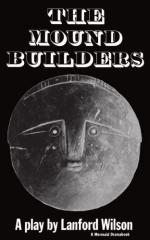The main features of the story seem correct. The Toltecs seem to have been allied to the Peruvians. Their skulls seem of the Brachycephalic type. The Toltecs were agriculturists, were mechanical, industrial, and constructive. In Mexico, and further south in Nicaragua, as well as northward, large mounds remain which are traced to them. According to the Aztec story the Toltecans spread in Mexico from the seventh to the twelfth century at which latter day they were swept away. My theory is that it was this race—which must have been very numerous—which either came from Peru in South America, capturing Mexico and then flowing northward; or perhaps came from New Mexico, the American Scythia of that day, and sending one branch down into Mexico, sent another down the Rio Grande, which then spread up the Mississippi and its tributaries The mounds mark the course of this race migration. They are found on the Mississippi. One part of the race seems to have ascended the Ohio to the great lakes and the St. Lawrence, another went up the Missouri, while another ascended the Mississippi proper and gained communication from its head waters with the Rainy and Red Rivers. When then did the crest of this wave of migration reach its furthest northward point? Taking the seventh century as the date of the first movement of the Toltecs toward conquest in Mexico, I have set three or four centuries as the probable time taken for multiplication and the displacement of former tribes, until they reached and possessed this northern region of “The Takagamies,” or far north mound builders. This would place their occupation of Rainy River in the eleventh century. Other considerations to which I shall refer seem to sustain this as the probable date. The grand mound is by far the
LARGEST MOUND
on Rainy River. It is likewise at the mouth of the Bowstring River, which is its largest tributary and affords the readiest means of access from the Mississippi up which the Toltecan flood of emigration was surging. My theory is that here in their new homes, for three centuries they multiplied, cultivated the soil, and built the mounds which are still a monument to their industry. Here they became less warlike because more industrious, and hence less able to defend themselves. I have already stated that the
AZTEC WHIRLWIND OF CONQUEST
swept into Mexico from the Northwest about the twelfth century. The sanguinary horde partly destroyed and partly seized for its own use the civilization of the Toltecans. We have specially to do with an Aztec wave that seems to have surged up the valley of the Mississippi. As the great conquering people captured one region, they would settle upon it, and send off a new hive of marauders. Indian tribes, numerous but of the same savage type, are marked by the old Geographers as occupying the Mississippi valley.




